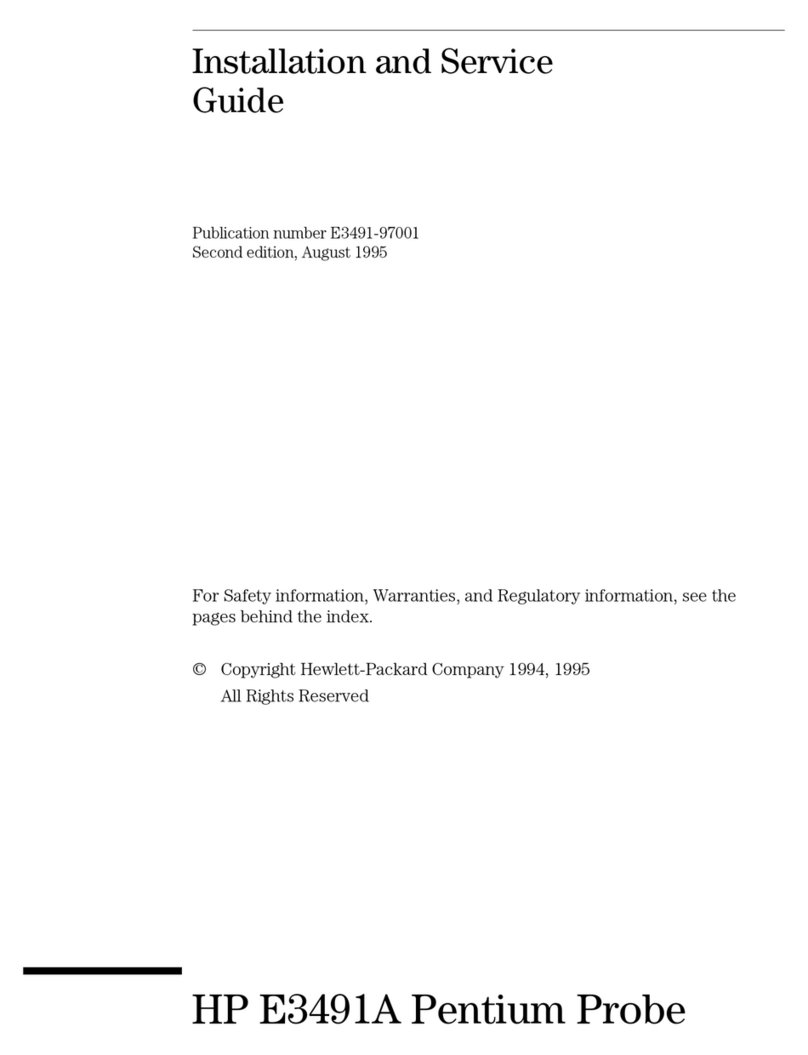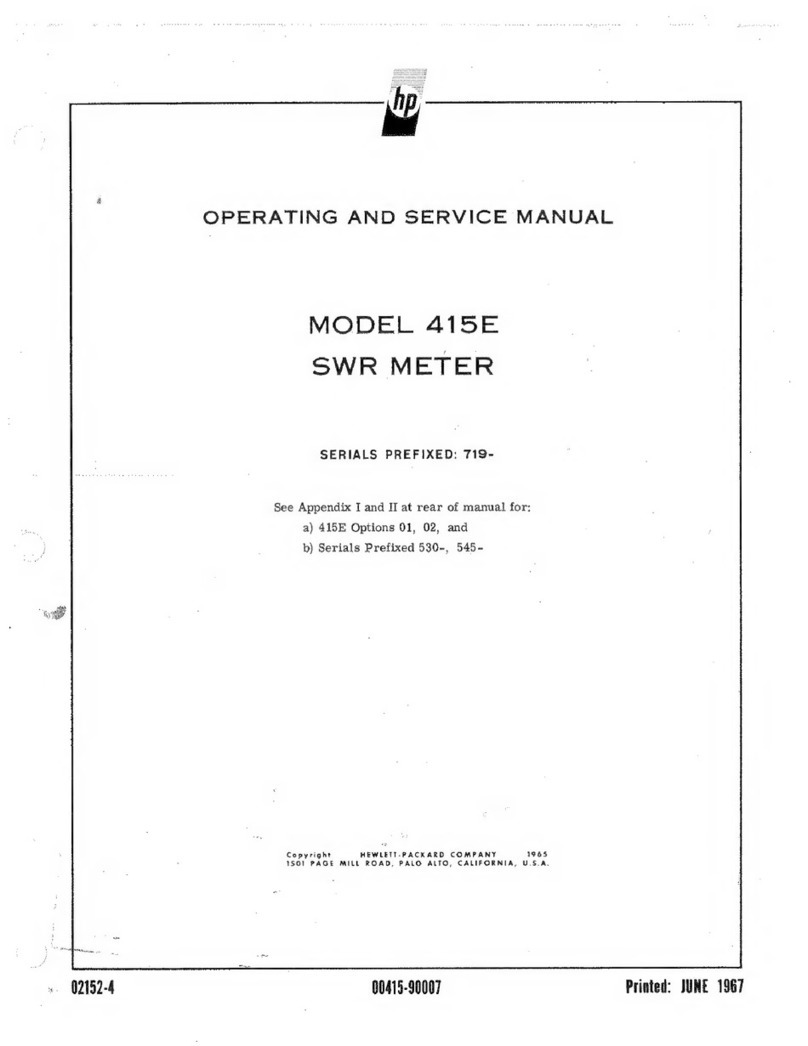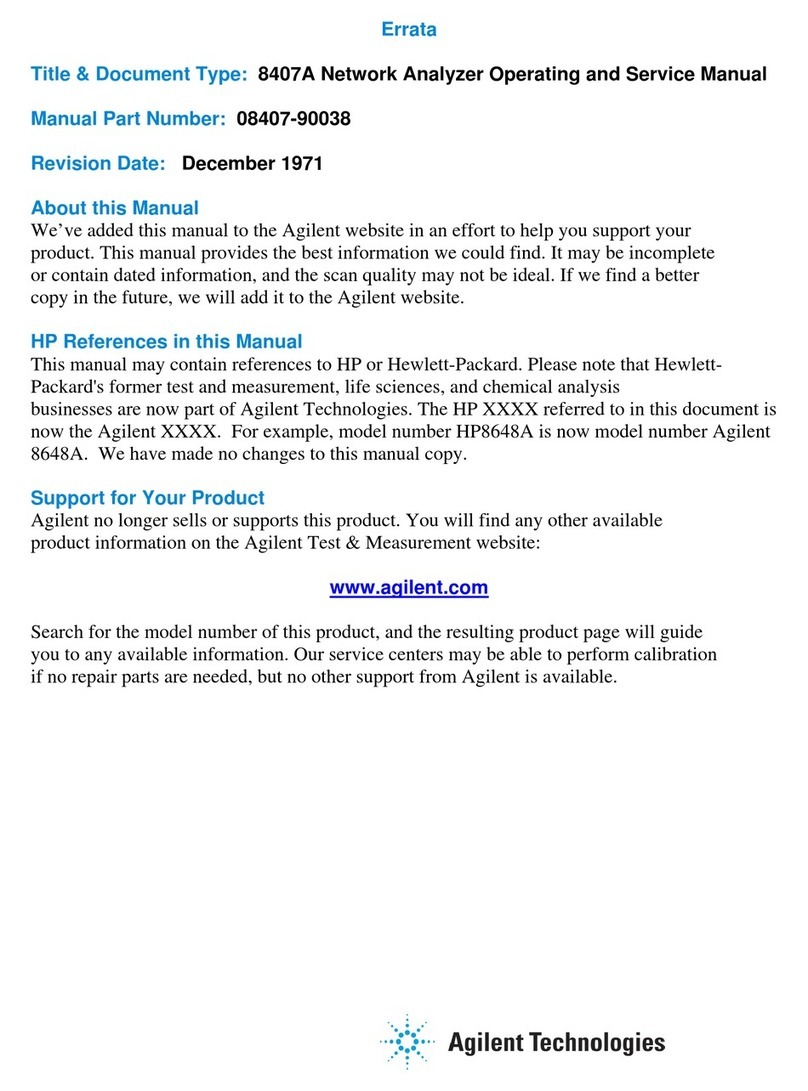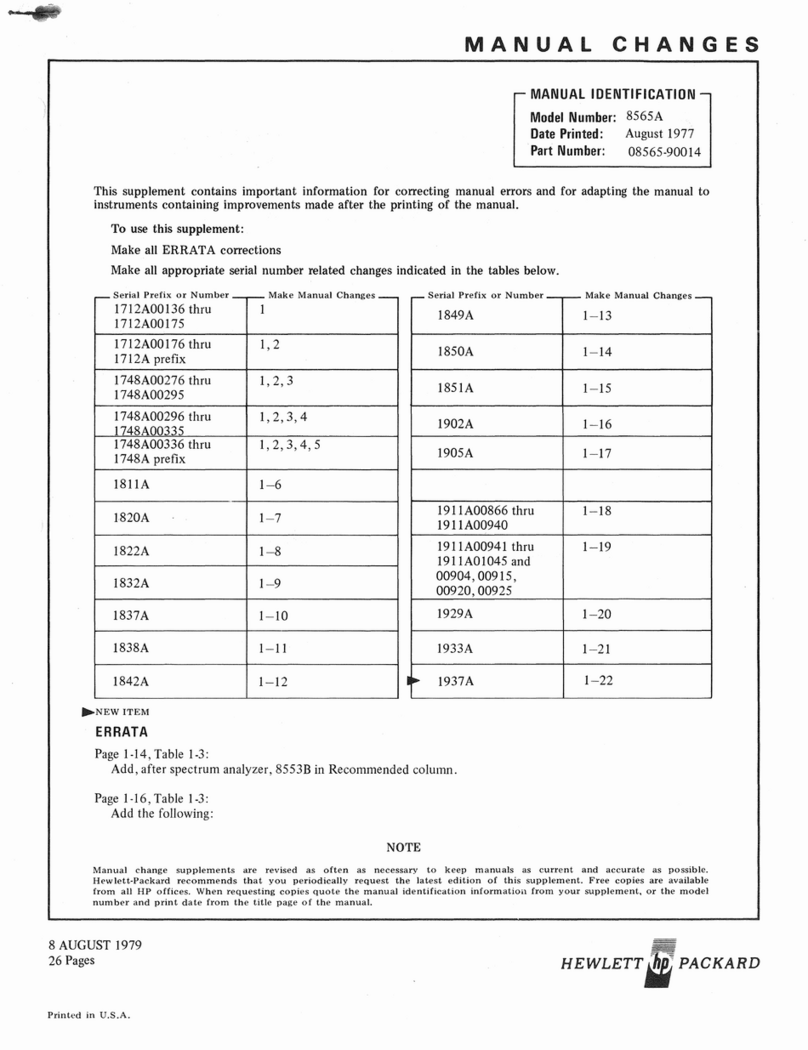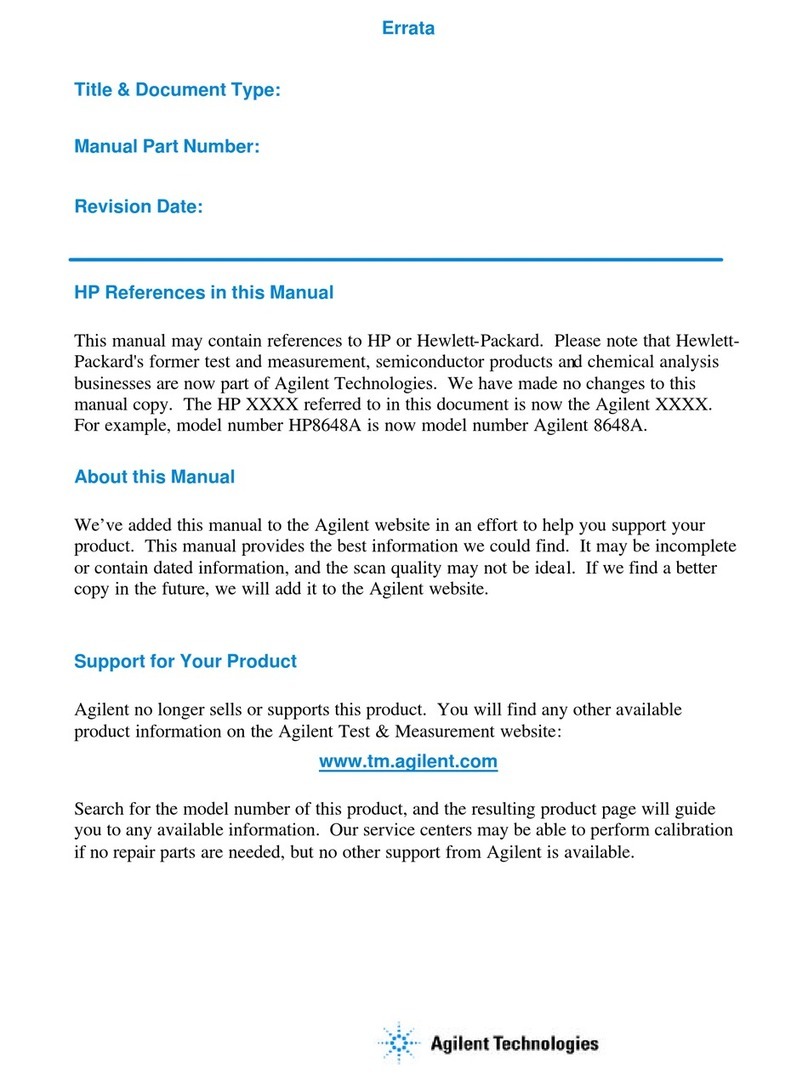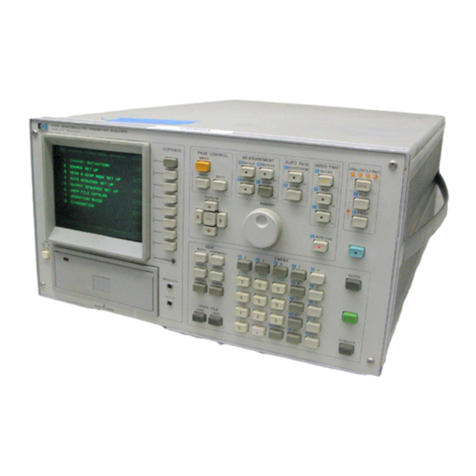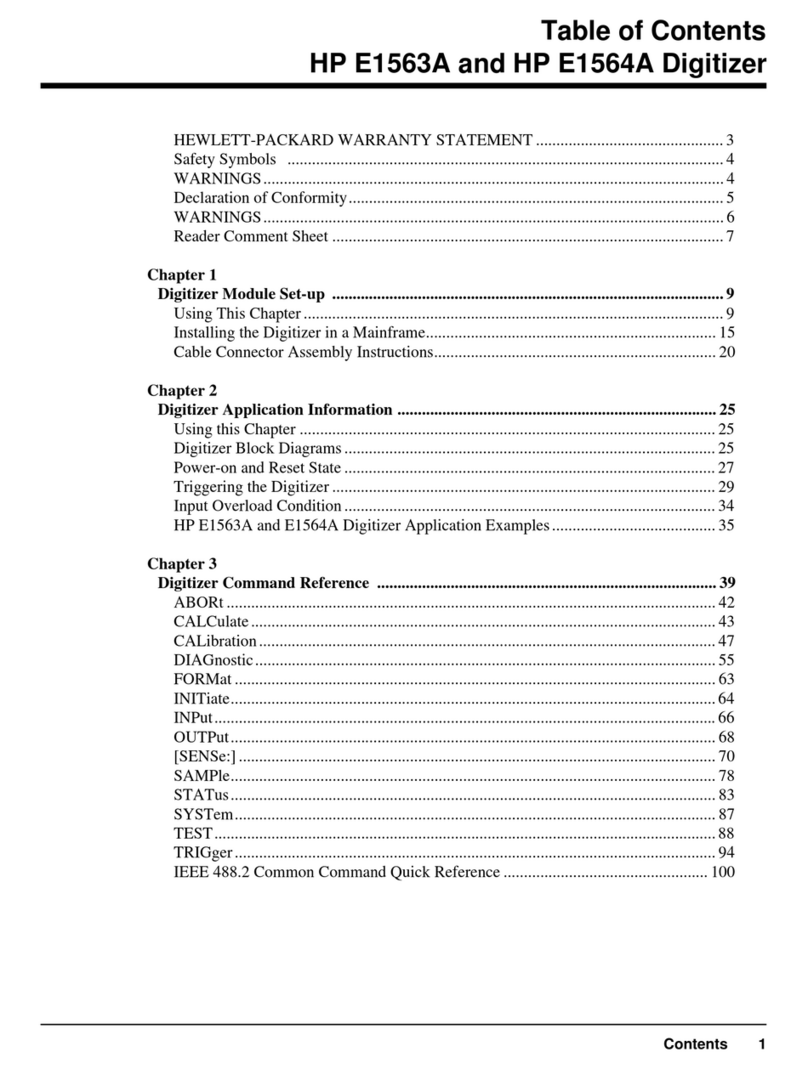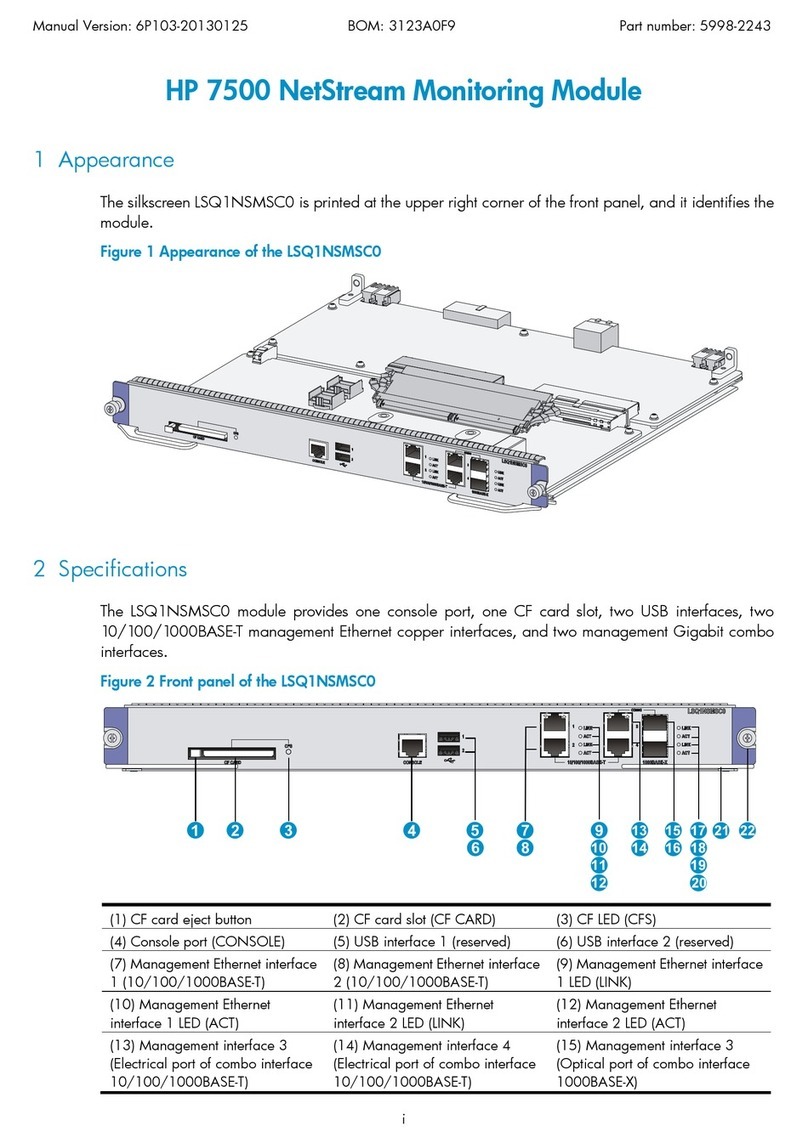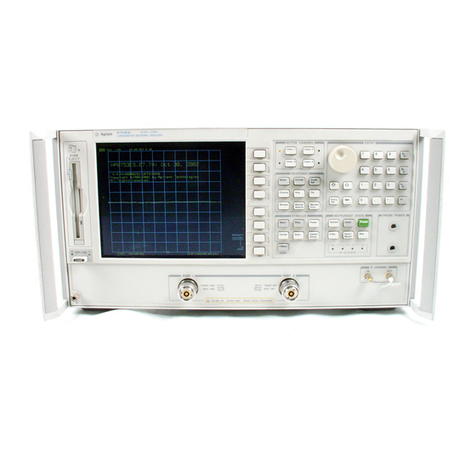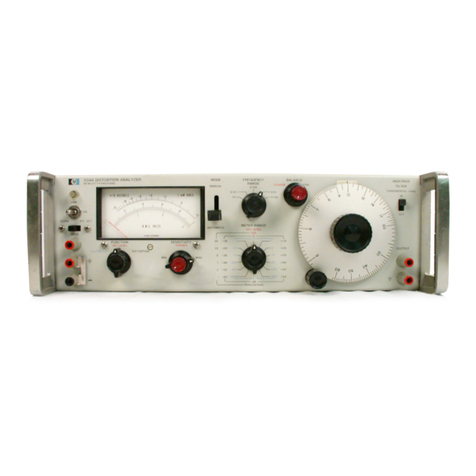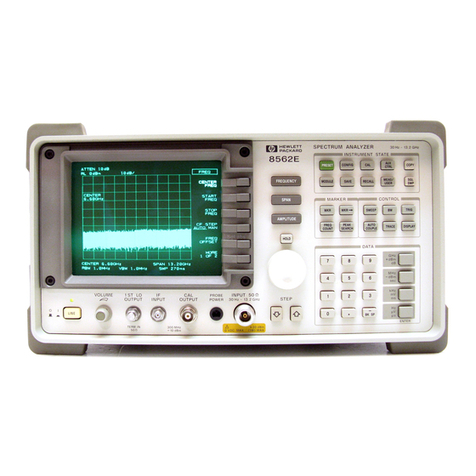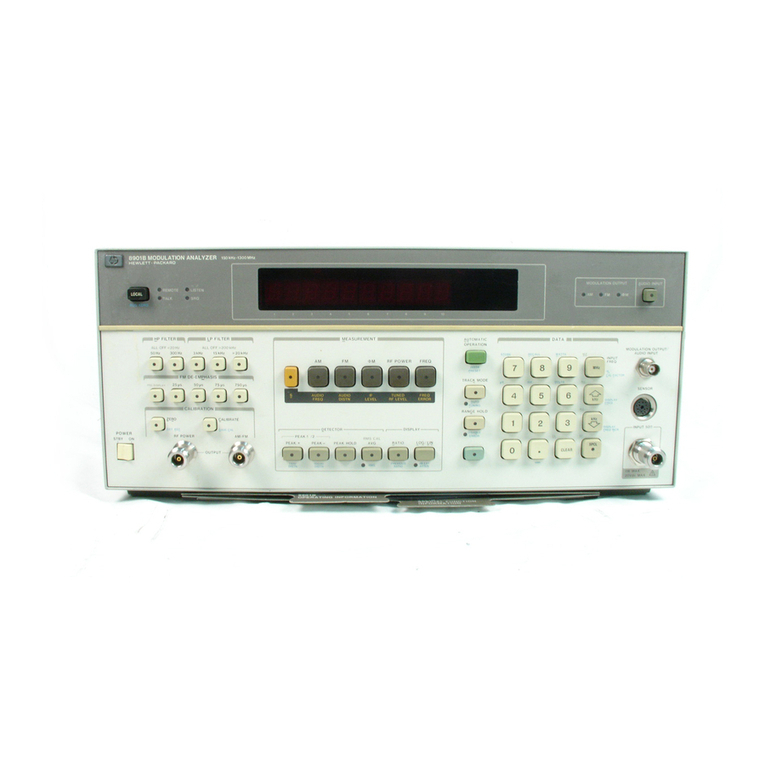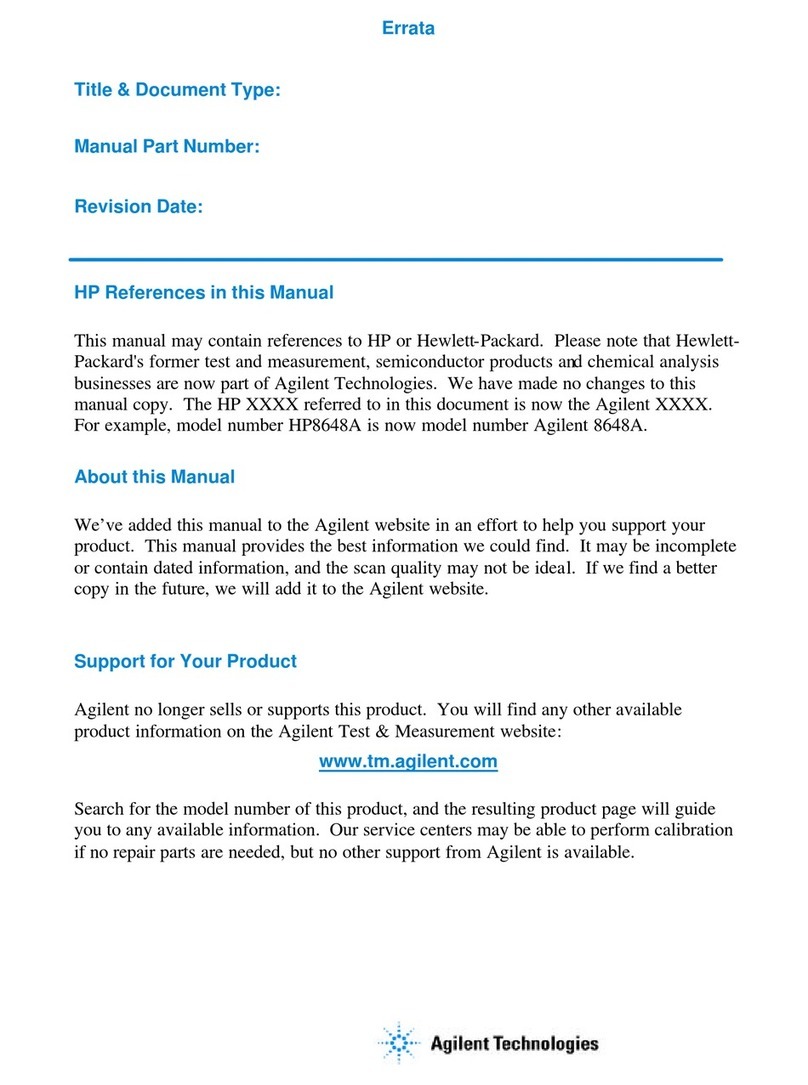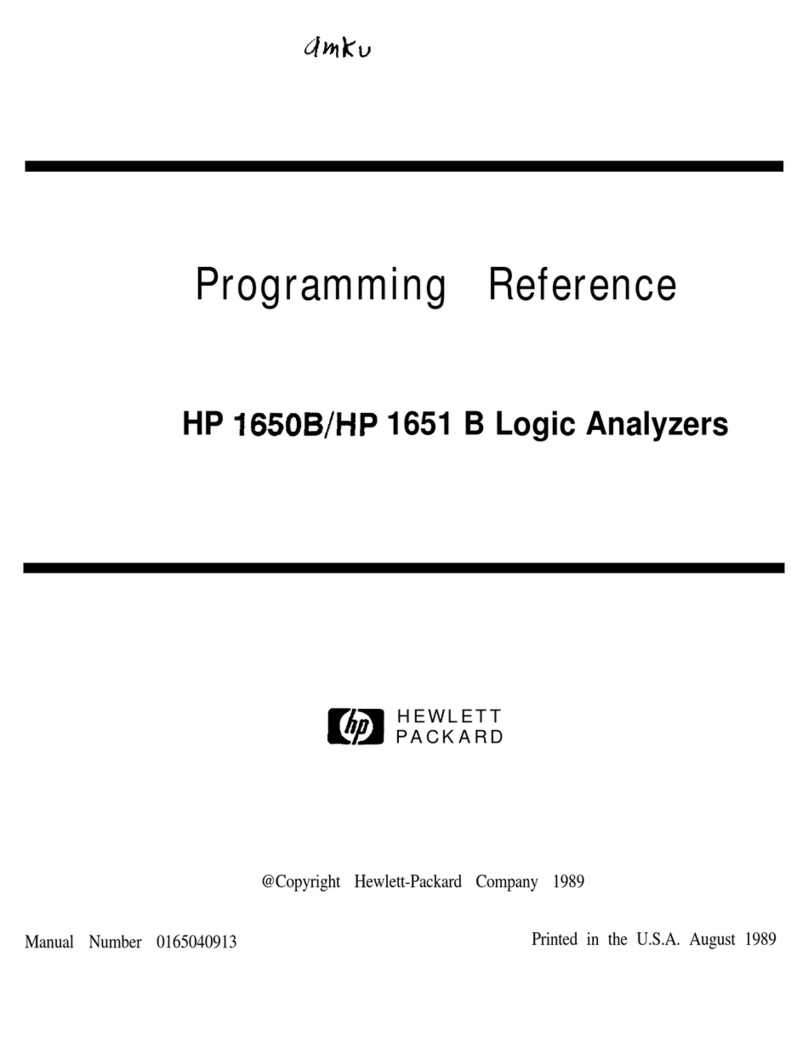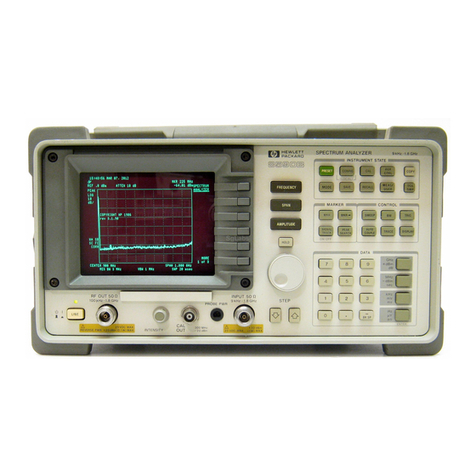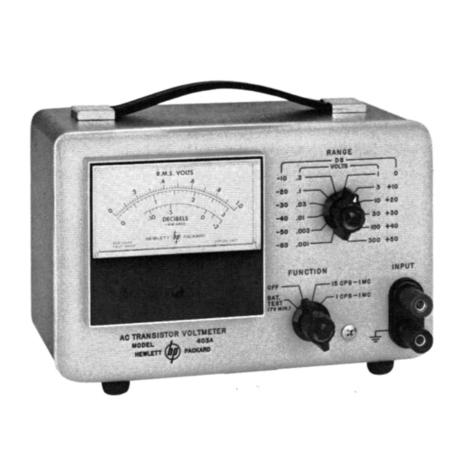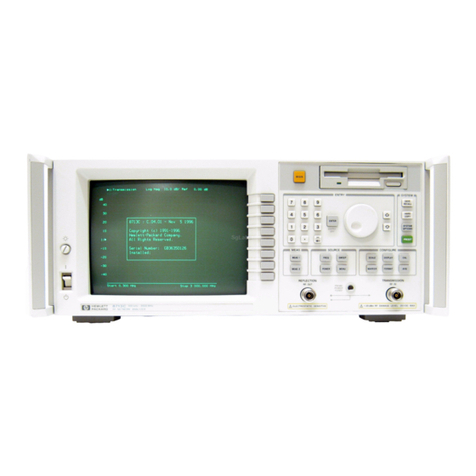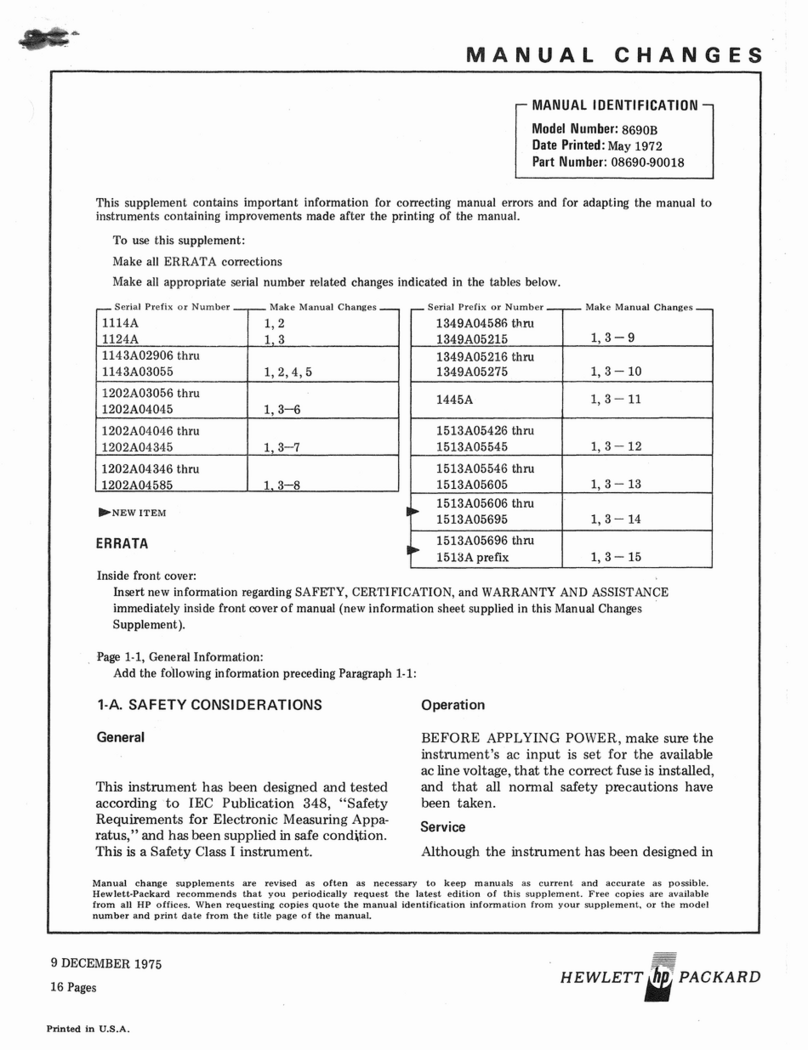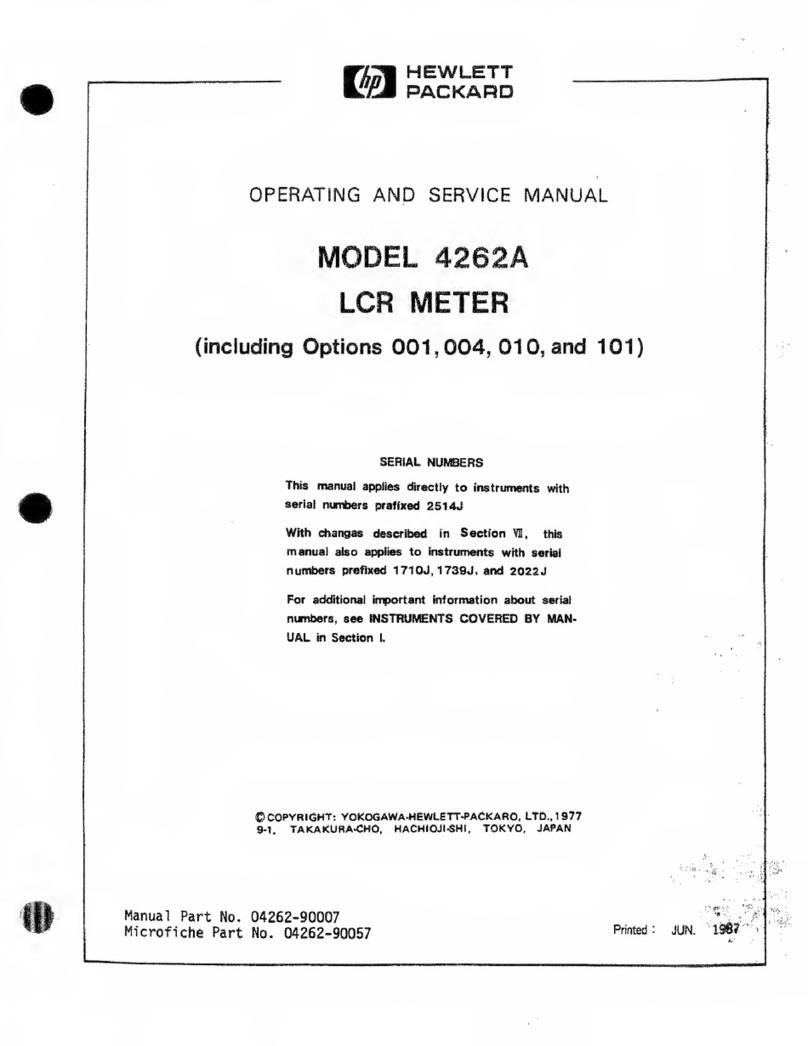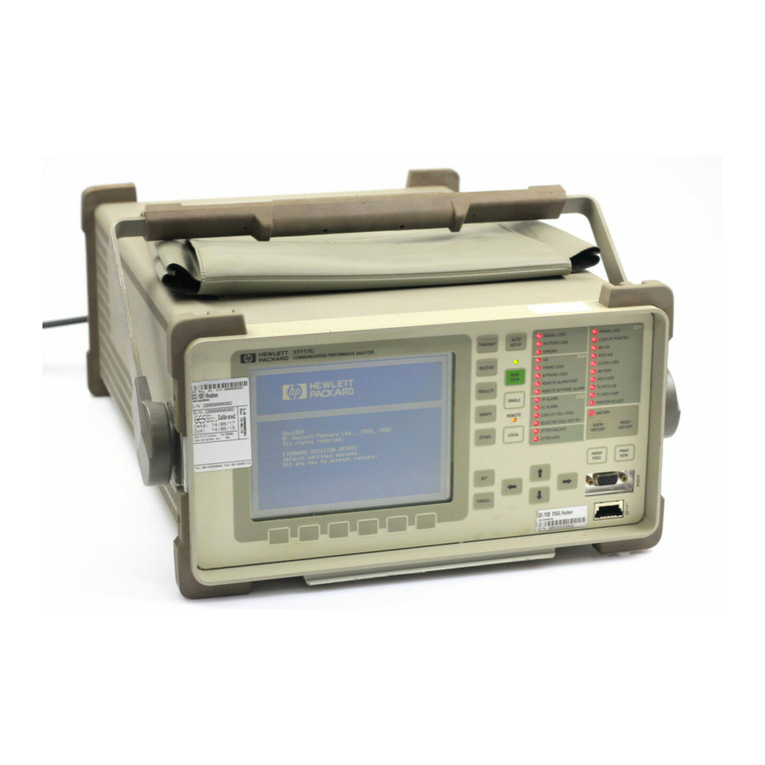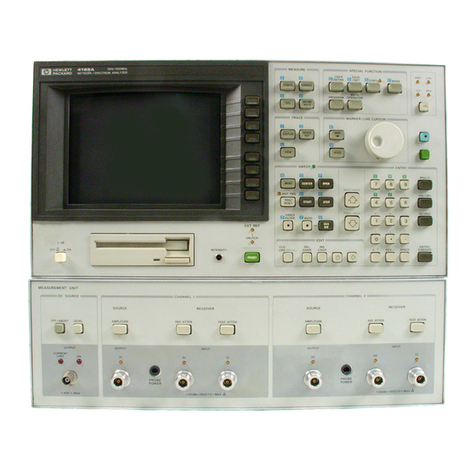
Model 204B
3-1.
INTRODUCTION
0
SectionI11
Paragraphs 3-1 to 3-15
SECTION
111
OPERATION
3-2. The Model 204B has four operating controls and
one output connector (see figure 3-1). Asine
wave
signal in the 5-cps to 560-kc range
is
selected by
positioning the FREQ.
,
RANGE, and VERNIER con-
trols. Output power level
is
controlled by the
AMPLITUDE control which hasatleast
a
40-db range.
A
115/230 volt switch
is
on the
rear
panel whenosci-
llators
are
equipped with an ac power supply
or
re-
chargeable battery power supply,
3-4. Operating instructions for the Model 204B
are
given in figure 3-1.
3-3.
PROCEDURE.
3-5.
GENERAL OPERATING
CONSIDERATIONS.
3-6.
To
prevent damage to transistors
in
the oscil-
lator,
a
blocking capacitor should be used in series
with the output when connecting to
a
load acrosswhich
there
is
a
dc potential difference. When the capacitor
is
used, initial current surge must be limited to
a
capacitance-voltage product lessthan 200 microfarad-
volts. For example,
if
a
20-volt potential difference
exists across the load. use
a
10-uf capacitor (10uf x
20 v
=
200
!.l
fv). CAUTION
DO
NOT CONNECT THE OSCILLATOR
ACROSS
LOADS
WHICH ARE REFERENCED
OFF GROUND BY MORE THAN rt25
VOLTS; HIGHERVOLTAGESWILL BREAK
DOWN COMPONENT INSULATION,
3-7. When the Model 204B
is
initially turned on and
RANGE switch
is
set to X1, allow 20 seconds for
os-
cillator to stabilize;only
a
few
seconds
are
necessary
for stabilization when switching to other RANGE po-
sitions.If FREQ. dial
is
sweptat too
fast
a
rate, out-
put voltage fluctuations will occur (since
a
wirewound
resistor
is
used
as
thevariable frequencydetermining
element).
If
sweep speed
is
decreased
or
sweeping
is
stopped, oscillator output will stabilize
at
its
normal
level.
3-8. To obtain maximum amplitude stability from
battery-powered oscillators, wait 20 minutes after
turn-on topermit the battery voltage to stabilize.This
effect may cause
as
much
as
a
1%
change in amplitude
during the first 20 minutes of operation.
3-9. When operating from batteries (Mercury
or
Nickel-Cadmium) thebatteries require replacement
or
recharging (Nickel-Cadmium batteries only) when
maximum oscillatoroutput becomes lessthan 5.0 volts
rms
open circuit
or
less
than
2.5
volts rms into 600
ohms. For mercury battery replacement data, refer
to paragraph 3-26. Charging instructions for nickel-
cadmium batteries
are
given in paragraph 3-16.
3-10.
OPERATION WITH RECHARGEABLE
BATTERIES.
3-11. There
is
no
change in the operating procedure
for
an instrument in which the rechargeable battery
01369-4
supply has been installed. However, this power sup-
plypermits eitheracoperationfor 115/230 vac
&lo%
(selected by switch on rear)
50
to 1000 cps power
sources
or
batteryoperationforportable applications.
Battery operation only (with charger power cord dis-
cotnected)
is
required at temperatures below 32'F
(0
$!)
and
is
recommended at temperatures above
104
F
(4OOC).
3-12. When the RANGE switch
is
turned
OFF,
power
is
removed from the oscillator portion of the instru-
ment and
a
resistor
is
connected across the output of
the power supply. The charger will continueto
operate
as
long
as
the power cord
is
connected to
a
power source. The resistor, placed across the out-
put of the power supply, acts
as
a
load in place of the
oscillator section to maintain
a
constant charge rate
through the batteries.
A
diode in the output circuit
prevents battery discharge when the oscillator
is
not
connected to
a
power source.
3-13. It
is
recommended that thepower cordbe con-
nected to
a
power source whenever possible. This
will
prevent self-discharge of thebatterycells and will
assure
a
fully charged battery whenever portable
operation
is
required. Turn the oscillator
OFF
when
not in use, particularly
when
operating with the power
cord disconnected.
3-14. When fully charged, the batteries will power
the oscillator for approximately 40 hours of contin-
uous
or
intermittent operation provided they are at
a
temperature of 81
F
+lo
.
If
the batteries are oper-
ated
at
higher
or
lower temperatures their capacity
is
reduced
as
the temperature extremes
are
approach-
ed;approximately28 hop
at
122
F
(500C)
or
approx-
imately 20 hours at -4
F
(-20 C). At temperatures
beyond these extremes the batteries are not capable
of
supplying their characteristic stable discharge
voltage.
3-15. The
+122'F
to -4'F temperature range
is
adequate for most users, however, keep these limits
in mind when operating under field cotditions. Inter-
nal temperatures in excess of 122
F
are
easily
obtained
if
the instrument
is
left in the sun, even with
a
moderate ambient temperature. Good practice would
be to avoid storing, transporting,
or
operating in
directsunlightotherthan for
a
very short period. Also
avoid placing the instrument in
a
location where
surrounding equipment might excessively
raise
the
internal temperature.
CAUTION
THE HERMETICALLY SEALED CELLS IN
THESE BATTERIES MAY BE PERMANENTLY
DAMAGED OR THEIR LIFE DRASTICALLY
REDUCED IF EXPOSED TO EXTREMELY HIGH
TEMPERATURES. THIS DANGER INCREASES
UNDER PROLONGED CONDITIONS.
3-1












